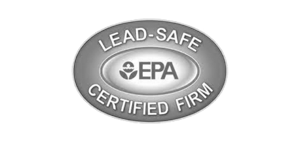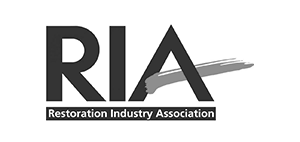Did you know that up to 30% of flooded homes develop mold within just 48 hours if not properly dried and cleaned? Flooding can cause significant issues like structural damage, health hazards from contaminants, and long-term moisture problems leading to mold and rot. Whether it’s a natural disaster like a hurricane or a household mishap such as a plumbing failure, the aftermath often requires immediate action and careful documentation for an insurance claim for water damage. Many homeowners are surprised to learn that flood damage may not be covered by regular homeowners insurance unless they have specific flood insurance.
Key Takeaways:
- Mold can develop within 24-48 hours of a flood, potentially making items unsalvageable if left wet for over 48 hours.
- Floodwater poses a significant physical risk as it weighs approximately 10 lbs per cubic foot.
- Moisture levels need to be at 15%, or preferably 10%, before reconstruction begins to prevent further structural damage and health issues.
- It can take anywhere from 1 to 6 weeks to dry out a flooded house, depending on ventilation and drying methods used.
- Approximately 14% of all homeowners will experience a water damage-related property claim each year.
- About 25% of flood insurance claims come from low-risk areas, stressing the need for flood insurance.
Immediate Steps to Take After a Flood
Safety is the top priority after a flood. Homeowners should wait for local authorities to say it’s safe to go back. When it’s okay, turn off gas, electricity, and water to avoid dangers.
Check if the building is safe. Floods can damage foundations and walls. This is a key step.
Once it’s safe, start cleaning up by removing wet items to stop mold. Take lots of photos for insurance claims. The National Flood Insurance Program (NFIP) doesn’t need a disaster declaration. Mold can grow quickly, so act fast.
When dealing with a flooded basement, wear protective gear like masks and gloves. This is important for homes built before 1978. Kids should not help with cleanup to keep them safe from mold and pollutants.
Work with licensed and insured contractors for property restoration. Keep generators away from doors and windows to avoid carbon monoxide poisoning. Also, follow local advice on drinking water, like using bottled or boiled water.
Flooding can cost a lot, with average claims around $30,000. About 20% of flood insurance claims are from areas not considered high-risk. This shows the need for flood prevention and insurance.
It can take 2 to 4 weeks to dry a home completely. This means drying and ventilation are key. Flooding can also spread diseases and chemical hazards. So, document everything and get professional help for a good emergency response and property restoration.
What Happens If Your House Gets Flooded?
Flooding can destroy a house in many ways, leading to big financial losses and health risks. It can weaken a home’s foundation, making it important to assess damage quickly. Water can also make walls and ceilings swell and collapse, needing fast action to stop more harm.
Mold and mildew grow fast in wet conditions, within 24 to 48 hours. This can harm your health, making flood insurance essential. It’s key to file an insurance claim for water damage quickly to cover repair costs.
Flooding can also ruin your belongings, like appliances, electronics, and furniture, very quickly. Floods are a big problem in the U.S., causing about 90% of natural disasters each year. It’s important to check your flood insurance and know what it covers.
Standing water can be full of harmful stuff, like waste and chemicals. It’s best to avoid touching it and wear protective gear when cleaning up.
Assessing flood damage also looks at long-term problems like structural damage and mold. These can make your home unsafe and unhealthy. FEMA says homes in flood-prone areas have a 1 in 4 chance of flooding in 30 years. This shows why good flood insurance is key.
Fixing flood damage can cost between $2,500 and $12,000, depending on the damage. It’s important to act fast, call professionals for help, and file an insurance claim to lessen financial loss.
Knowing how flooding can affect your home and health can help prevent long-term damage. Keep your flood insurance up to date, know local rules, and start assessing and claiming damage quickly to get through tough times.
Conclusion
Recovering from house flooding is tough and takes time. It’s important to focus on restoring your home to ensure safety. Homeowners need to check for damage right away, looking for structural issues and health risks from contaminants.
It’s also key to document all damage well. This helps when making flood insurance claims. This step is vital for getting the help you need.
Floods pose serious risks, like flash floods that can happen without warning. River and coastal flooding can last for days or weeks. With climate change, urban flooding is expected to increase by 30% by 2050.
Communities and resources are essential after a flood. The American Red Cross offers help, like the book “Repairing Your Flooded Home.” It’s full of useful tips for fixing your home.
Don’t forget to talk to your insurance agent quickly about damage claims. Make sure to choose reliable contractors for cleanup and repairs. And remember, the emotional impact of flooding is real. Support from your community and mental health services are important for recovery.



















